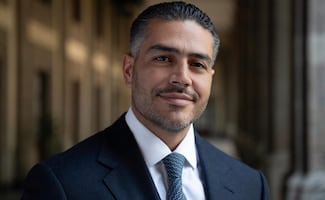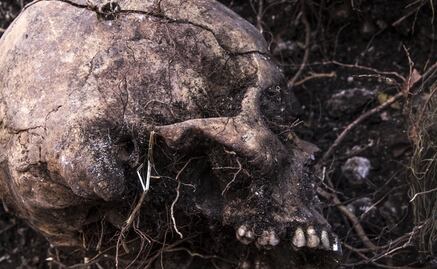Más Información

New York Times destaca rol de Harfuch en el combate del narco; resalta intercambio de inteligencia con EU

Marco Rubio destaca labor de seguridad de México; "están haciendo más que nunca en su historia", afirma

"Queremos cerrar este capítulo", dice Salinas Pliego al SAT; esperarán a enero a conocer fundamentos legales de adeudo fiscal
The government said it would initially commit 400 million pesos (USD$21 million) to work through the backlog, including updating forensic databases, establishing five new forensic centers, bringing in experts and using new technologies.
More than 200,000 people have been killed in gang-fueled violence, and over 40,000 have disappeared since former President Felipe Calderón sent in the armed forces to tackle Mexico’s powerful drug cartels at the end of 2006.
President Andrés Manuel López Obrador
, a leftist who took office in December, has vowed to end the lawlessness and bring justice for the families, calling previous governments the violators “par excellence” of human rights in the country.
Still, 2019 is on track to be the most violent year on record, and protesters shouted at the president during a news conference in which the plans were unveiled.
Since López Obrador took office on December 1 , the National Commission for the Search of Missing Persons has located 426 clandestine graves with a total of 551 bodies , mainly in Veracruz, Sinaloa, and Guerrero .
During a morning press conference at Mexico’s National Palace, commissioner Karla Quintana Osuna revealed what she called “the data of terror,” indicating that another 207 clandestine burial sites had been found in the states of Sinaloa, Guerrero, Chihuahua, and Zacatecas.
“There will be all the support and all the funds necessary to address this outcry,” López Obrador said at the event in his presidential office. “This is the worst legacy left to us by past governments.”
Thousands of bodies and remains have piled up from the ad hoc burials given victims of the violence, raising public ire over chronic impunity in Mexico.
Criminal gangs often bury the bodies of rivals or victims in clandestine graves. Some exhumed bodies appear to have been doused in acid or dismembered before burial.
“We must find a way forward ... that guarantees us dignified treatment and identification of the bodies,” said Alejandro Encinas, the deputy interior minister responsible for human rights .
The National Human Rights Commission (CNDH) said that between January 2007 and September 2016, Mexican prosecutors reported the discovery of 855 clandestine graves, from which 1,548 bodies and 35,958 additional body parts were exhumed.
Encinas acknowledged that many bodies and body parts across the country had yet to undergo autopsies. Remains often lie in mass graves without ever being identified by relatives or officials. A shortage of experts has exacerbated the problem.
“This has led to a profound forensic crisis that we now need to face,” Encinas said.
dm
Noticias según tus intereses
[Publicidad]
[Publicidad]












